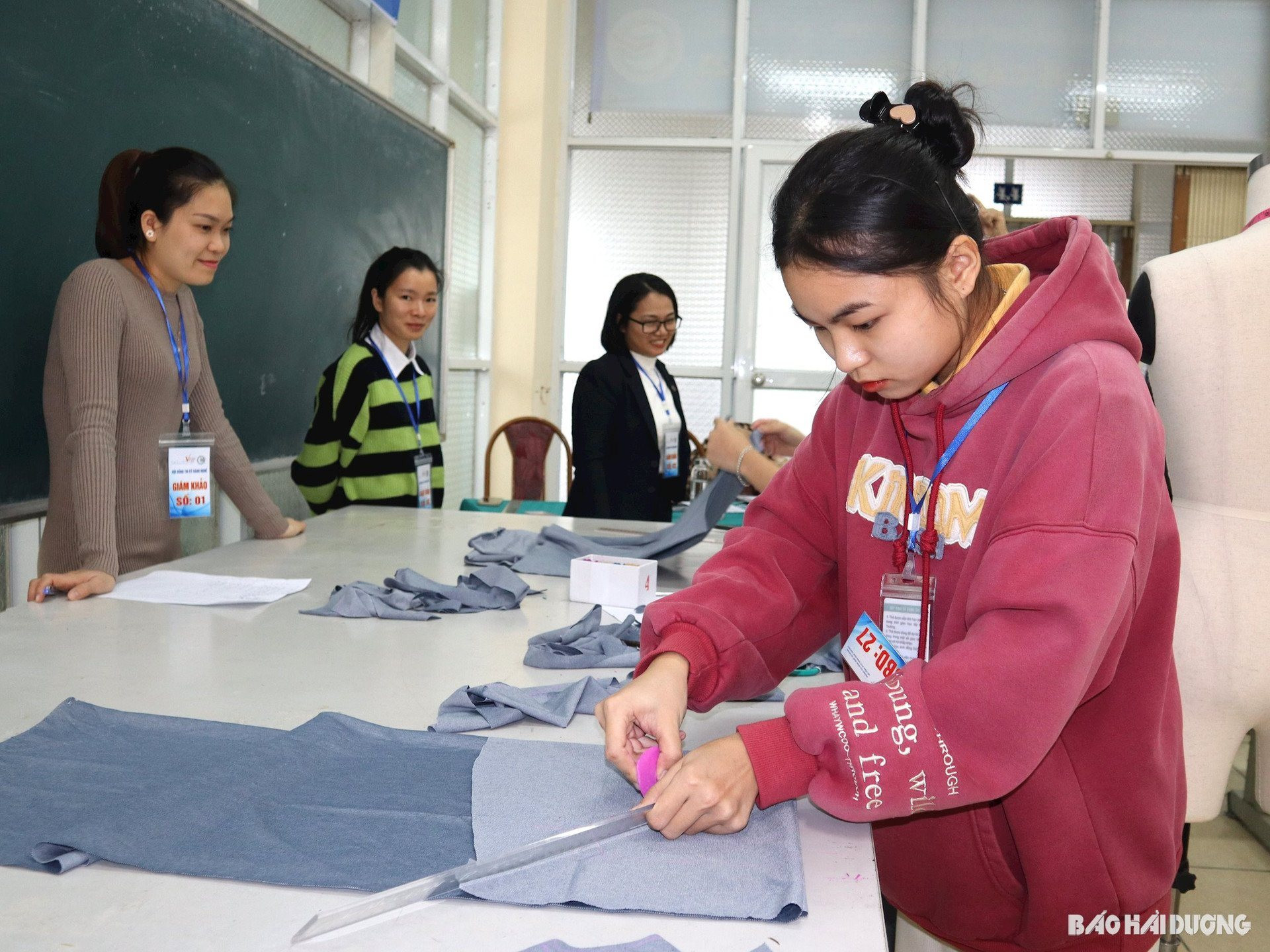Vocational training on demand and vocational education development in Hai Duong will help ensure human resources to serve the province's socio-economic development.

Hai Duong currently has 33 vocational training institutions and enterprises participating in vocational training activities, including 8 colleges, 3 secondary schools, 9 vocational training centers, 12 vocational training centers - continuing education, 1 enterprise participating in vocational training activities. The public sector has 22 units, the rest are private.
Most of the vocational training facilities are concentrated in Hai Duong city, Chi Linh and some districts near Hai Duong city. Vocational training facilities and vocational training facilities recruit and train 42 college-level occupations, 75 intermediate-level occupations, and 102 elementary-level occupations. Many occupations are invested in and developed at the ASEAN and international levels. Each year, the college system has a training scale of about 3,100 students, and the intermediate system trains over 6,300 students.
In the period from 2021-2023, colleges and vocational secondary schools in Hai Duong have trained nearly 16,000 students, focusing on a number of majors and occupations in social sciences and humanities, arts, education and training; business; engineering and information technology; production, processing and construction; health; services, tourism, environment, etc.
Over 80% of students have jobs after graduation. The qualifications of the vocational education teaching staff are basically up to standard and above standard. The facilities and equipment for training have met the minimum requirements. Some vocational education institutions have invited businesses and employers to participate in developing training programs and assessing learners' capacity...
The vocational education system in Hai Duong has made progress compared to the period 2015-2020. However, a key issue of this education system has changed little, which is that the quality of vocational education training has not met the requirements of the labor market and the requirements of socio-economic development. Many vocational education institutions only train according to the available "supply", not meeting the training needs of the labor market, especially labor in enterprises. The technical expertise of workers is not high, the ability to work in groups, vocational skills, and foreign language proficiency are still limited. The ability to adapt to change, practical skills, awareness, and working style are also not really good. Many workers who have been trained in vocational schools are recruited but enterprises have to retrain them...
The main reason is that vocational training institutions have not actively innovated their recruitment work and opened new training majors to meet the needs of society. Equipment for vocational training is still lacking, old and outdated, not keeping up with the level and machinery of businesses and employers.
It is a fact that many parents want their children to go to university, not vocational training, so many vocational training institutions have difficulty recruiting students. Enterprises with high demand for labor such as textiles, garments, footwear, electronics, etc. tend to train their own workers, and do not have the need to cooperate in training and improving the quality of labor.
To attract students to vocational schools, improve the quality of vocational education, and provide direct labor for socio-economic development, in the coming time, all levels and sectors in Hai Duong need to pay attention to synchronous investment in facilities and equipment for vocational education. Develop a team of teachers, managers, artisans, experts, and vocational trainers; coordinate with organizations and businesses to build training programs according to output standards; expand training in new occupations such as semiconductor chip production, hydrogen, carbon credits, etc. to provide a source of labor suitable to market requirements. Consider tuition support for students receiving vocational training at vocational training institutions that meet business orders. Forecasting labor market demand and information needs to be accurate and scientific.
In the long term, it is necessary to promote the socialization of education and training, mobilize investment capital to build high-quality vocational schools. Encourage businesses, especially large-scale businesses, to establish their own labor training facilities to serve their own needs and those of other businesses in the same industry.
NGUYEN HOANG